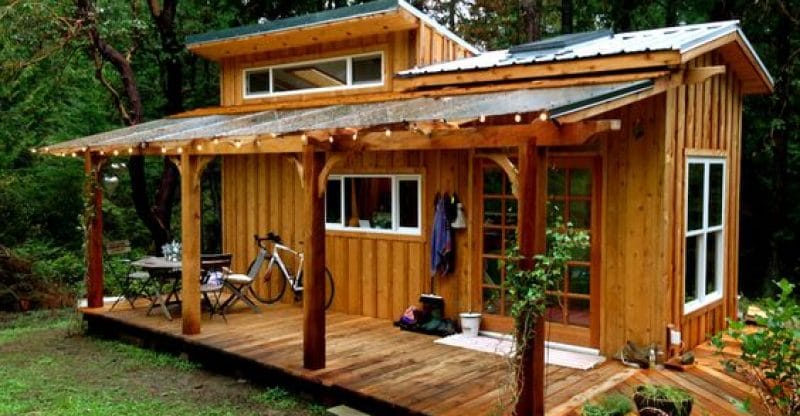What is a Tiny House
 Thursday 31 August 2023
Thursday 31 August 2023The Beauty of Tiny Houses: Living Large in a Small Space
In a world where bigger often seems better, the tiny house movement stands as a delightful and innovative rebellion. A tiny house is not just a diminutive structure; it's a lifestyle, a philosophy, and a commitment to simplicity. As the name suggests, a tiny house is a compact dwelling designed to make the most out of every square inch while encouraging a more sustainable and intentional way of living.
Defining Tiny Houses: Size with Purpose
The term "tiny house" doesn't refer to a specific size, but rather to a class of homes that emphasize efficient use of space while keeping the dimensions intentionally small. Generally, a tiny house is around 100 to 400 square feet, but some enthusiasts go even smaller, creating micro-dwellings that might be no larger than a small room in a traditional house.
Key Features of Tiny Houses
-
Space Efficiency: Tiny houses are meticulously designed to maximize every nook and cranny. Furniture often serves multiple functions—sofas convert into beds, tables can be tucked away, and storage is ingeniously integrated into every available space.
-
Simple Living: Embracing a tiny house often means decluttering and prioritizing possessions. This encourages a more mindful and simplified way of life, where belongings are chosen thoughtfully and with intention.
-
Minimalist Aesthetics: The limited space in a tiny house naturally leads to a minimalist interior design. Clean lines, functional furniture, and neutral color palettes dominate these spaces, creating an uncluttered and serene atmosphere.
-
Environmental Sustainability: Tiny houses have a significantly smaller environmental footprint compared to larger homes. They require less building material, consume fewer resources, and often employ energy-efficient technologies, such as solar panels and composting toilets.
-
Financial Freedom: One of the most attractive aspects of tiny living is the potential for financial freedom. The lower costs associated with building, maintaining, and living in a tiny house can free up funds for other life experiences and goals.
-
Mobility: Many tiny houses are built on trailers, allowing for mobility. This means that you're not tied down to a single location—your home can travel with you, giving a whole new meaning to the phrase "home is where the heart is."
Challenges and Considerations
While the tiny house movement has numerous benefits, it's important to acknowledge some challenges:
-
Limited Space: The most obvious challenge is also a part of the charm—limited space. For some, adjusting to a compact living environment can be a significant shift.
-
Regulations: Many areas have regulations that restrict where tiny houses can be located. It's crucial to research and understand these laws before embarking on a tiny house journey.
-
Utilities and Amenities: Tiny houses might require creative solutions for utilities like water and electricity. Additionally, some amenities common in larger homes might need to be sacrificed or adapted for a smaller space.
-
Personal Relationships: If you're not living alone, the dynamics of sharing such close quarters with others can be challenging. Open communication and a strong sense of cooperation are vital.
The Freedom to Live Differently
The tiny house movement offers a refreshing alternative to the conventional notion of homeownership. It's a way of life that encourages us to reevaluate what truly matters, focusing on experiences, connections, and sustainable living. Whether you're drawn to the idea of downsizing, reducing your carbon footprint, or simplifying your life, the tiny house movement showcases the beauty of living large in a small space.